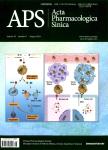Neuroprotective effects of cyclooxygenase-2 inhibitor celecoxib against toxicity of LPS-stimulated macrophages toward motor neurons
Neuroprotective effects of cyclooxygenase-2 inhibitor celecoxib against toxicity of LPS-stimulated macrophages toward motor neurons作者机构:Department of Pharmacology Shanghai Institute of Materia Medica Shanghai Institutes for Biological Sciences Chinese Academy of Sciences Graduate School of Chinese Academy of Sciences Shanghai China
出 版 物:《Acta Pharmacologica Sinica》 (中国药理学报(英文版))
年 卷 期:2005年第26卷第8期
页 面:952-958页
核心收录:
学科分类:1007[医学-药学(可授医学、理学学位)] 1006[医学-中西医结合] 100706[医学-药理学] 100602[医学-中西医结合临床] 10[医学]
主 题:amyotrophic lateral sclerosis celecoxib macrophage NSC34 cell lipopolysaccharide cyclooxygenase-2 prostaglandin E2 nitric oxide reactive oxygen species
摘 要:Aim: To establish an in vitro injured motor neuronal model and investigate the neuroprotective effects and possible mechanism of celecoxib, a selective cyclooxygenase-2 (COX-2) inhibitor, on this model. Methods: After macrophages were stimulated with lipopolysaccharide (LPS)+interferon-γ(IFN-γ) in the pre-sence or absence of celecoxib for 24 h, the cell-free supernatant of LPS-stimulated macrophages was transferred to the culture of NSC34 cells. Viability of NSC34 cells was assessed by MTT assay after a further 24 h and 72 h incubation. After macrophages were stimulated by LPS+IFN-γ for 12 h or 24h, the release of pros-taglandin E2(PGE2), nitric oxide (NO), reactive oxygen species (ROS), tumor necro-sis factor α(TNF-α) and interleukin-1β (IL-1β) from macrophages was measured by radioimmunoassay, Griess assay, fluorescence assay and enzyme-linked immunosorbent assay, respectively. The mRNA levels of COX-2, inducible nitric oxide synthase (iNOS), TNF-α and IL-1β in macrophages were determined by reverse transcription-polymerase chain reaction after macrophages were stimu-lated for 6 h and 12 h. Results: The supernatant of LPS-stimulated mouse mac-rophages induced the death of NSC34 cells and celecoxib protected the NSC34cells against this toxicity. The LPS-induced increases in the release of PGE2, NO,TNF-α and IL-1β from macrophages were attenuated by pre-treatment with celecoxib. However, celecoxib showed no effect on the ROS levels upregulated by LPS+IFN-γin the macrophage supernatant. The mRNA levels of COX-2, iNOS, TNF-α and IL-1β were increased in LPS-activated macrophages and, except COX-2, reduced by pre-treatment with celecoxib. Conclusion: An in vitro injured motor neuronal model was established by using the toxicity of LPS-stimulated mouse macrophages toward motor neuronal NSC34 cells. In this model, celecoxib exerted neuroprotective effects on motor neurons via an inhibition of the neurotoxic secretions from activated macrophages.



